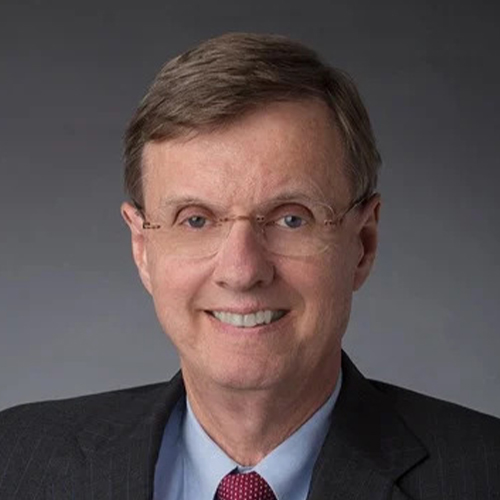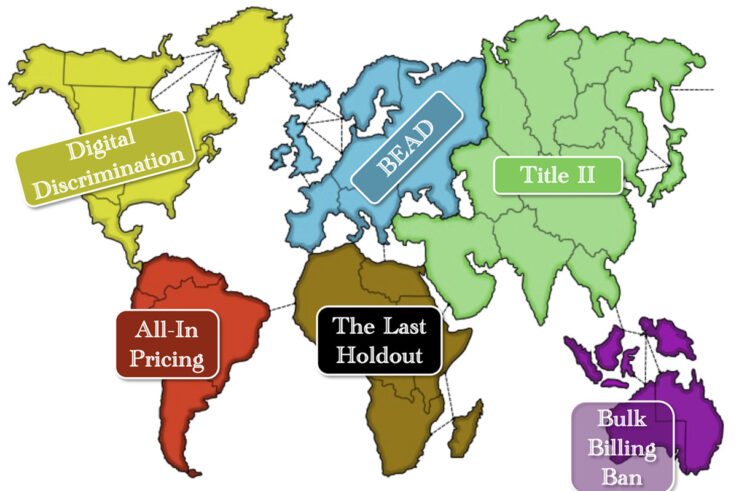This article is a part of the The Law & Economics of Interchange Fees Symposium symposium.
Next summer, the World Cup, the world’s most watched sporting event, marks its quadrennial return. Although thirty-two teams will compete in South Africa, the list of favorites begins with the two teams that have won half of the previous eighteen tournaments and three of the last four—Brazil and Italy. Brazil plays an open and flowing brand of soccer. Italy sits back and pounces when its opponents stumble. Although Brazil and Italy follow different philosophies, they have achieved similar success because both have adopted strategies to overcome the adversity that inevitably arises in a major tournament. Even a weak opponent can manage to score a single goal when a referee blows a call. But good teams find a way to overcome.
Long-running legal and policy debates have the feel of the World Cup. Firms on either side of an issue develop their arguments for and against particular policies, and they stage matches between their respective positions in journals and before Congress, courts and administrative agencies. Legislators, judges and administrators observe those skirmishes and, ultimately, render decisions. One hopes that these decisions reflect the relative merits of the parties’ competing positions. But even well-intentioned officials make mistakes. The challenge for a firm engaged in a long-running debate is to develop persuasive arguments even in the face of mistakes by the decision makers.
We found ourselves thinking about the ability of generations of Brazilian and Italian soccer players to overcome adversity as we read the GAO’s much anticipated report on interchange. Although we agree with the report’s ultimate conclusion, we were surprised at how the GAO reached this result. The GAO accepted as true the point from which critics in the U.S. launched their attack on interchange—that “rising interchange fees have increased costs for merchants.” The GAO nevertheless recognized, correctly in our view, that the government should neither set rates nor prevent the networks from enforcing the many acceptance rules about which merchants complain. And the fact that the GAO reached this conclusion notwithstanding its flawed analysis of the changes in interchange rates over the recent past is yet more evidence that the networks have the better of the argument.
Interchange is a function of network architecture, not product design. When a payment network supports multiple issuers and acquirers (i.e., allows multiple financial institutions to issue payment products to consumers and to sign merchants to accept those cards), it needs some mechanism that enables those issuers and acquirers to exchange their transactions. This design explains why Discover, but not American Express, has adopted an interchange mechanism. Discover has opened its network to third-party issuers and acquirers. And like Visa and MasterCard, it sets the rate at which issuers and acquirers on its network exchange transactions. American Express now supports third-party issuers, but it remains the sole acquirer on its network. It compensates issuers for providing transactions, but it does not need an interchange device.
Interchange fees are as much a feature of the transactions that consumers initiate with pre-paid and debit transactions on the Visa, MasterCard and Discover networks as the fees are on the networks’ credit transactions. But the GAO limited its analysis of the change in interchange rates over time to credit transactions, rendering useless this aspect of GAO’s analysis. The centerpiece of the analysis of the change in rates over time is found in Table 2 at page 15. There, the GAO reports that 43% of Visa rates and 45% of MasterCard rates increased between 1991 and 2009.
But the GAO neglects to mention a significant intervening event—the resolution of the Wal-Mart litigation. That settlement allowed merchants to accept Visa and MasterCard credit cards without also accepting the network debit cards. (See In re Visa Check/Mastermoney Antitrust Litig., 297 F. Supp. 2d 503 (E.D.N.Y. 2003), aff’d, Wal-Mart Stores, Inc. v. Visa U.S.A. Inc., 396 F.3d 96 (2d Cir. 2005)). And the settlement must be considered when comparing the post-settlement rates to the pre-settlement rates. Prior to the settlement, credit and debit transactions were offered in a bundle. Post-settlement, the transactions were offered independently. Although the system-wide average rate did not change following the settlement, the prices of the components moved in different directions. Credit rates increased, while debit rates fell. (See Chart 3 here).
The report offers no explanation for the GAO’s decision to limit its analysis of changing interchange rates to credit transactions or omit discussion of the Wal-Mart litigation. Although the legislation commissioning the report sought an analysis of the effect of interchange on credit cards, the report as a whole discusses interchange more generally. And Visa and MasterCard tried to persuade the GAO to examine changes in all fees. The report acknowledges that both Visa and MasterCard told the GAO that “their average effective interchange rates applied to transactions have remained fairly constant in recent years when transactions on debit cards, which have lower interchange fee rates, are included.” The GAO’s response to this observation is a non sequitur: “[h]owever, our own analysis of Visa and MasterCard interchange rate schedules shows that the interchange rates for credit cards have been increasing and their structures have become more complex.”
Moreover, interchange fees relate to but are different from the prices that merchants pay to accept payments. Changes in rates often but do not always affect the prices that merchants pay to accept particular forms of payment. (See chart 4 here). Whether a given rate applies to a given merchant turns on the nature of the rate (i.e., whether it applies to all merchants or just some), the investments that the merchant has made in its acceptance technology, and the merchant’s skill in negotiating with its acquirer. And the net effect of increases in some rates and decreases in others depends on the mix of transactions at that merchant. The weighted average interchange rate may have declined over time for merchants with proportionally more debit transactions than credit transactions. The first clause of the title of the GAO report should thus read “Changing Interchange Rates Have Had Varying Effects on the Prices That Different Merchants Pay to Accept Different Types of Payments.” (The first clause of the title of the GAO Nov. 2009 Report actually reads: “Rising Interchange Fees Have Increased Costs for Merchants.”)
But the larger point for purposes of this comment is that the alleged increase of interchange rates and its effect on merchant costs merely opens the inquiry. Many questions follow. Higher interchange rates may drive additional sales for merchants, enable electronic payments to displace less efficient (or more expensive) legacy forms of payment, or reduce the costs of electronic payment for consumers. The GAO report documents the existence of each of these benefits. And it confirms that efforts to regulate interchange rates or reform acceptance rules have shifted costs from merchants to consumers. For these reasons, the GAO’s report, on balance, provides little comfort to interchange critics.





